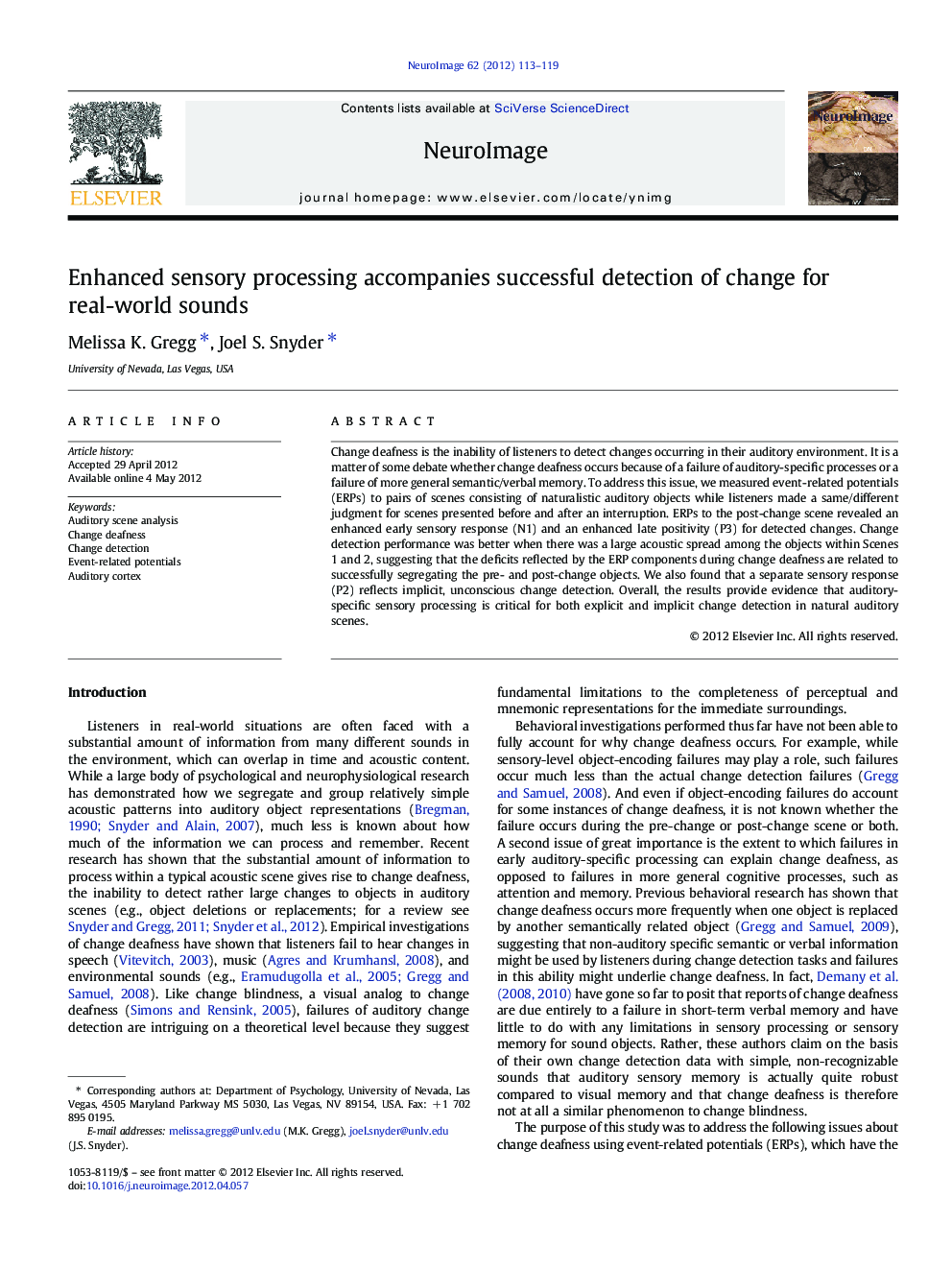| کد مقاله | کد نشریه | سال انتشار | مقاله انگلیسی | نسخه تمام متن |
|---|---|---|---|---|
| 6031847 | 1188736 | 2012 | 7 صفحه PDF | دانلود رایگان |

Change deafness is the inability of listeners to detect changes occurring in their auditory environment. It is a matter of some debate whether change deafness occurs because of a failure of auditory-specific processes or a failure of more general semantic/verbal memory. To address this issue, we measured event-related potentials (ERPs) to pairs of scenes consisting of naturalistic auditory objects while listeners made a same/different judgment for scenes presented before and after an interruption. ERPs to the post-change scene revealed an enhanced early sensory response (N1) and an enhanced late positivity (P3) for detected changes. Change detection performance was better when there was a large acoustic spread among the objects within Scenes 1 and 2, suggesting that the deficits reflected by the ERP components during change deafness are related to successfully segregating the pre- and post-change objects. We also found that a separate sensory response (P2) reflects implicit, unconscious change detection. Overall, the results provide evidence that auditory-specific sensory processing is critical for both explicit and implicit change detection in natural auditory scenes.
⺠We measured ERPs during a change detection task to naturalistic auditory scenes. ⺠ERPs revealed enhanced early and late enhancements for detected changes. ⺠A separate sensory response reflected implicit, unconscious change detection. ⺠Results show sensory processing is critical for explicit/implicit change detection.
Journal: NeuroImage - Volume 62, Issue 1, 1 August 2012, Pages 113-119